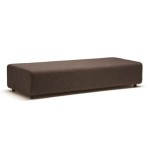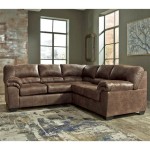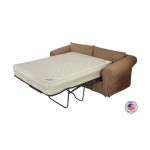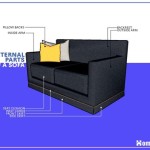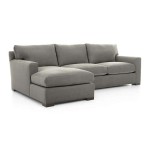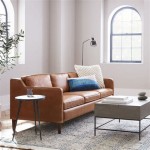Which Material is Best for Sofa Set Cushions and Throws in the USA?
Selecting the ideal material for sofa set cushions and throws can significantly impact the comfort, appearance, and longevity of living room furniture. In the United States, consumers have a wide array of options, each with distinct properties and benefits. Choosing the right material necessitates a careful consideration of factors such as durability, aesthetic appeal, maintenance requirements, and cost. The optimal choice will ultimately depend on individual needs and preferences, balancing practicality with personal style.
The fabric used for sofa cushions and throws directly affects the tactile experience and overall comfort. A highly textured, rough fabric might be visually appealing but less enjoyable for daily use. Conversely, a very smooth fabric might lack visual interest. Therefore, striking a balance between aesthetics and comfort is crucial. Beyond immediate comfort, the material's resistance to wear and tear, fading, and staining will determine its long-term value. These factors are particularly important for families with children or pets, where furniture is subject to more frequent and rigorous use.
The climate within a specific region of the United States also plays a role. In warmer climates, breathable fabrics are preferable, while colder climates may benefit from materials that offer greater insulation and warmth. Furthermore, the existing décor of the living room should be considered. The color, texture, and style of the cushions and throws should complement the overall aesthetic to create a cohesive and visually pleasing environment. This article explores various materials commonly used for sofa set cushions and throws in the USA, providing insights into their respective strengths and weaknesses to assist consumers in making informed decisions.
Durability and Longevity: Factors to Consider
The durability of a fabric refers to its ability to withstand wear and tear, including abrasion, tearing, and fading. Selecting a durable material is particularly important for sofa cushions, which are subjected to frequent use and potential spills. Several factors contribute to a fabric's durability, including fiber content, weave, and any applied finishes.
Synthetic fibers, such as polyester and acrylic, are generally known for their durability and resistance to fading. They are also less prone to shrinking or stretching compared to natural fibers. Polyester, in particular, is widely used in upholstery due to its strength, affordability, and ease of maintenance. Acrylic, while similar to wool in appearance, offers greater resistance to moths and mildew, making it a suitable option for humid environments.
Natural fibers, such as cotton, linen, and wool, offer distinct aesthetic qualities and comfort. However, their durability can vary significantly. Cotton, while soft and breathable, is more susceptible to staining and fading compared to synthetic fibers. Linen is known for its strength and crisp texture, but it can wrinkle easily. Wool is a durable and naturally stain-resistant fiber, but it can be more expensive and may require professional cleaning.
The weave of a fabric also affects its durability. Tightly woven fabrics are generally more durable than loosely woven fabrics, as they offer greater resistance to abrasion and snagging. Denim, for example, is a tightly woven cotton fabric known for its durability and resistance to wear. Similarly, twill weaves are generally more durable than plain weaves.
Applied finishes can enhance the durability of a fabric. Stain-resistant finishes, such as those containing fluoropolymers, can protect the fabric from spills and stains. UV-resistant finishes can help prevent fading caused by sunlight exposure. These finishes can significantly extend the lifespan of sofa cushions and throws, especially in high-traffic areas.
Ultimately, the best choice for durability depends on the specific needs and usage patterns of the household. For families with children or pets, a durable synthetic fabric with a stain-resistant finish may be the most practical option. For those seeking a more luxurious feel, a tightly woven wool or linen fabric may be preferred, provided that proper care is taken to maintain its condition.
Aesthetic Appeal and Comfort: Balancing Style and Function
The aesthetic appeal of sofa cushions and throws plays a crucial role in defining the overall style of a living room. The selected material should complement the existing décor and reflect the personal taste of the homeowner. Considerations include color, texture, pattern, and overall style of the fabric.
Color is a primary element of aesthetic appeal. Neutral colors, such as beige, gray, and white, offer versatility and can easily blend with various décor styles. Bold colors, such as red, blue, and green, can add visual interest and personality to a room. However, it's important to choose colors that complement the existing color scheme and avoid creating a jarring or overwhelming effect.
Texture refers to the surface feel of a fabric and can significantly impact its visual appeal. Smooth fabrics, such as velvet and silk, offer a luxurious and elegant feel. Textured fabrics, such as corduroy and tweed, add visual interest and depth. The choice of texture should complement the overall style of the room. For example, a smooth velvet cushion may be suitable for a formal living room, while a textured corduroy cushion may be more appropriate for a casual living room.
Pattern is another important element of aesthetic appeal. Solid fabrics offer simplicity and versatility, while patterned fabrics add visual interest and personality. Common patterns include stripes, florals, geometric designs, and abstract patterns. The choice of pattern should complement the existing décor and avoid overwhelming the space. Smaller patterns are generally more versatile than larger patterns.
Beyond aesthetics, comfort is a crucial consideration. The fabric should feel pleasant to the touch and provide adequate support. Natural fibers, such as cotton and linen, are generally more breathable than synthetic fibers, making them suitable for warmer climates. Wool offers excellent insulation and warmth, making it suitable for colder climates. The choice of filling material for sofa cushions also affects comfort. Common filling materials include down, feathers, polyester fiberfill, and memory foam. Each material offers different levels of support and comfort.
Achieving a balance between aesthetic appeal and comfort is essential. A visually stunning fabric that feels uncomfortable to the touch will not be enjoyable to use. Conversely, a comfortable fabric that lacks visual appeal may not contribute to the overall style of the room. Therefore, it's important to carefully consider both the aesthetic and tactile qualities of the fabric when making a selection.
Maintenance and Care: Ease of Cleaning and Upkeep
The ease of maintenance and care is a practical consideration when choosing materials for sofa cushions and throws. Regular cleaning is necessary to maintain the appearance and hygiene of furniture, and the chosen material should be easy to clean and care for. Factors to consider include stain resistance, washability, and susceptibility to shrinkage or fading.
Stain resistance is a crucial factor, especially for families with children or pets. Fabrics with stain-resistant finishes are easier to clean and maintain than those without. Synthetic fibers, such as polyester and acrylic, are generally more stain-resistant than natural fibers. Certain natural fibers, such as wool, also offer natural stain resistance due to their lanolin content.
Washability refers to the ability of a fabric to be washed in a washing machine without damage. Machine-washable fabrics are generally easier to care for than those that require professional cleaning. Cotton, linen, and polyester are generally machine-washable, although it's important to follow the manufacturer's instructions for proper washing. Wool and silk typically require professional cleaning or hand-washing to avoid damage.
Susceptibility to shrinkage or fading is another important consideration. Some fabrics, such as cotton and linen, are prone to shrinking after washing. Synthetic fibers are generally more resistant to shrinkage. Fading can occur due to prolonged exposure to sunlight. Fabrics with UV-resistant finishes are less prone to fading. Dark-colored fabrics are generally more susceptible to fading than light-colored fabrics.
Different materials require different care instructions. Cotton can typically be washed in warm water and dried on a low setting. Linen should be washed in cold water and air-dried to prevent shrinkage. Polyester can be washed in warm water and dried on a medium setting. Wool should be professionally cleaned or hand-washed in cold water and laid flat to dry. Silk should be professionally cleaned to avoid damage.
Regular vacuuming can help remove dust and dirt from sofa cushions and throws, preventing them from becoming embedded in the fabric. Spot cleaning should be done promptly to remove spills and stains before they set. It's important to use appropriate cleaning products for the specific type of fabric. Always test cleaning products on an inconspicuous area of the fabric before applying them to the entire surface.
By carefully considering the maintenance and care requirements of different materials, consumers can choose options that are easy to clean and maintain, ensuring the longevity and appearance of their sofa cushions and throws.

The Best Fabric For A Sofa Choosing Right Material Your Home

5 Ways To Choose Arrange Cushions On A Sofa Heal S Blog

Tips A Test To Help You Choose The Right Sofa Cushion Material

How To Mix And Match Throw Pillows For Your Sofa Artiss

How To Arrange Cushions On A Sofa For Designer Finish Voyage Maison

How Many Cushions Should You Have On Your Sofa Furn Com

How To Pick Style Cushions For Grey Sofas Furn Com

How To Pair Diffe Materials Our Interior Designer S Guide Swyft

What Colour Cushions Go With Your Sofa Furn Com

Luxury Interiors Made Simple Learn How To Match Cushions Your Sofa Voyage Maison

